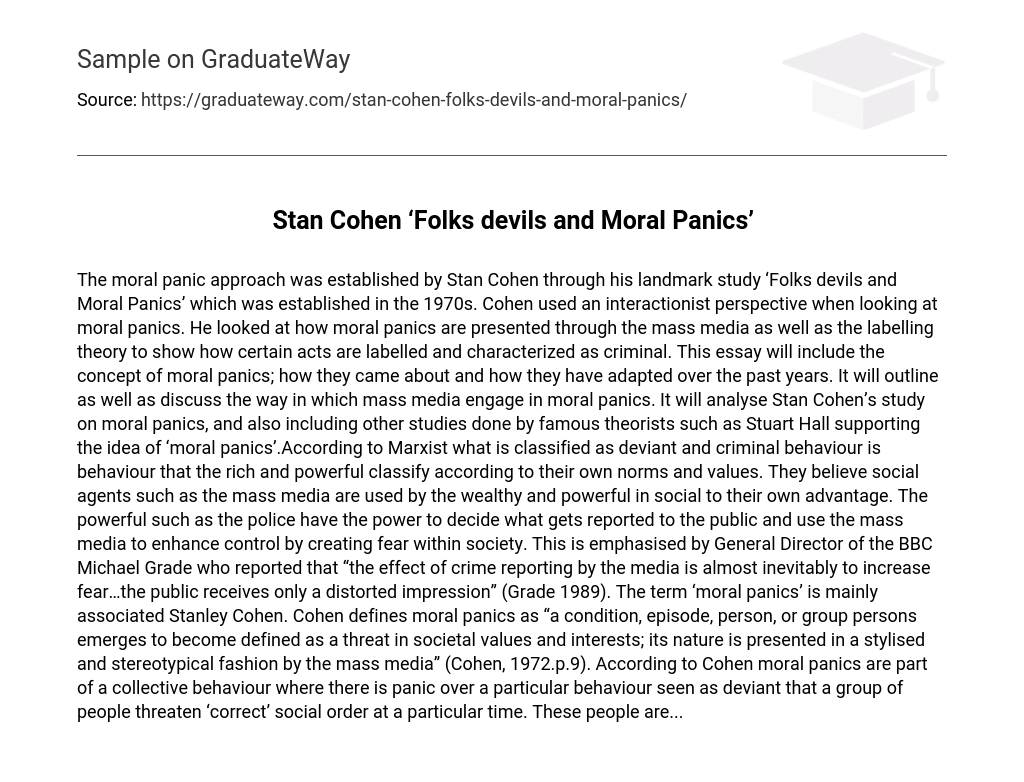The moral panic approach was established by Stan Cohen through his landmark study ‘Folks devils and Moral Panics’ which was established in the 1970s. Cohen used an interactionist perspective when looking at moral panics. He looked at how moral panics are presented through the mass media as well as the labelling theory to show how certain acts are labelled and characterized as criminal.
This essay will include the concept of moral panics; how they came about and how they have adapted over the past years. It will outline as well as discuss the way in which mass media engage in moral panics. It will analyse Stan Cohen’s study on moral panics, and also including other studies done by famous theorists such as Stuart Hall supporting the idea of ‘moral panics’.According to Marxist what is classified as deviant and criminal behaviour is behaviour that the rich and powerful classify according to their own norms and values. They believe social agents such as the mass media are used by the wealthy and powerful in social to their own advantage.
The powerful such as the police have the power to decide what gets reported to the public and use the mass media to enhance control by creating fear within society. This is emphasised by General Director of the BBC Michael Grade who reported that “the effect of crime reporting by the media is almost inevitably to increase fear…the public receives only a distorted impression” (Grade 1989). The term ‘moral panics’ is mainly associated Stanley Cohen. Cohen defines moral panics as “a condition, episode, person, or group persons emerges to become defined as a threat in societal values and interests; its nature is presented in a stylised and stereotypical fashion by the mass media” (Cohen, 1972.p.9). According to Cohen moral panics are part of a collective behaviour where there is panic over a particular behaviour seen as deviant that a group of people threaten ‘correct’ social order at a particular time.
These people are…





